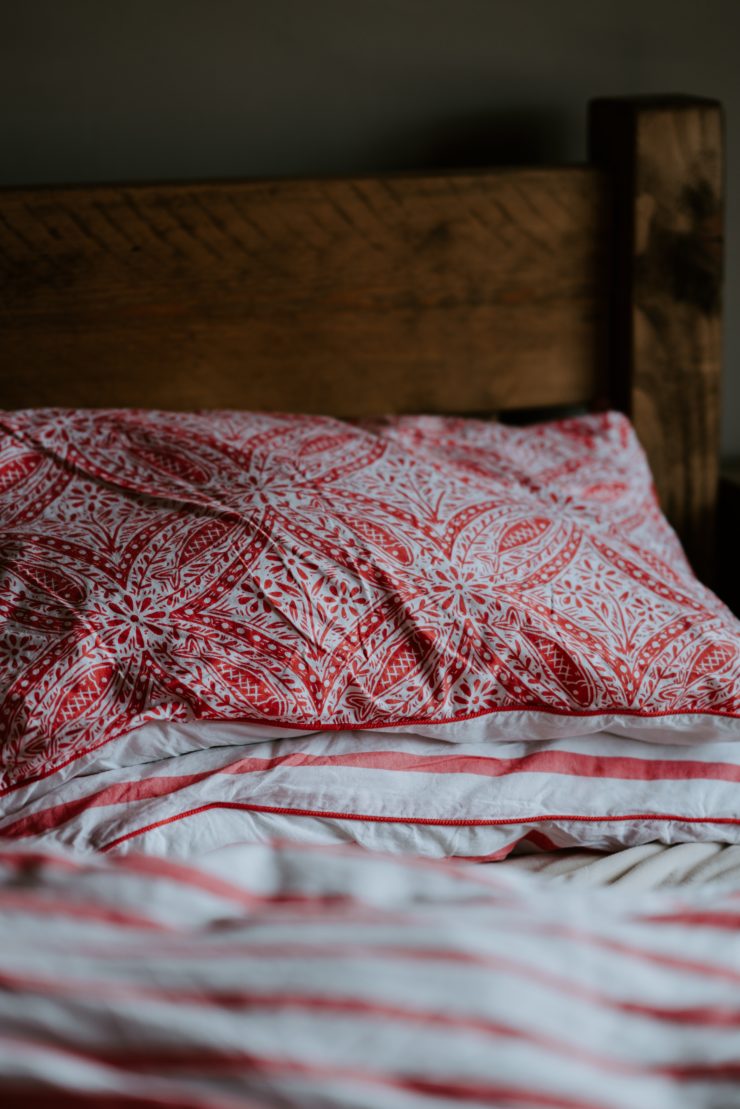Types of bedding and choosing the right one: Sleep is an extremely important issue in the life of every human being, because it is necessary to regenerate and properly charge the battery before the challenges of everyday life. However, it is worth considering – how to ensure that our sleep is as comfortable and complete as possible.
For this purpose, you should choose the right bedding that will provide you with a healthy and comfortable rest after often a hard day.
- https://www.iwebmaster.pl/jak-ortodonta-zaklada-aparat-staly/
- https://www.tf.edu.pl/jak-zapewnic-sobie-komfortowy-sen/
- https://www.amazonas-baby.pl/zalety-wypozyczalni-samochodow/
Types of cotton bed linen
The choice of bedding is not a joke, because a poor-quality product may not only make you uncomfortable, but also cause a rash. Before you buy the so-called “Great opportunity” be sure to get acquainted with the types of bedding that can be found on the market. One of the most popular bedding is the one made of cotton. This is due to the fact that the material is usually inexpensive and allows the skin to breathe. However, it should be remembered that cotton is uneven and the price difference between different types is due to the quality. The most common types on the market are:
- flannel bedding – flannel is a light fabric with a fiber covering on top – it is resistant to mechanical damage and insulates heat well, and thus it is good for cool nights,
- jersey bedding – in the past it was mainly a woolen fabric, today the cotton version prevails – it can be thin or thick, but it will always be dense, durable and good quality material,
- bark bedding – the bark is a fabric with a concave-convex, specific texture – often used for the production of bedding. Its advantages include non-wrinkling and versatility, but it is not suitable for cold nights,
- satin bedding – cotton satin is a very valuable material for bedding, it is soft, thin, and at the same time looks nice (slight shine). It insulates heat a bit worse, so it is perfect for summer and spring,
- percale bedding – it is made of a plain weave fabric, thicker than satin, but equally pleasant to the touch – such linen will be durable, good quality, and at the same time natural and pleasant to the skin,
- Egyptian cotton bedding – this type of long-grain cotton is of great quality – it is thick and good for cold nights, but quite expensive,
- cotton damask bedding – it is extremely effective, patterned, thick, warm and very durable bedding with a beautiful shiny pattern on a matte background or vice versa – it is perfect for winter,
- batiste bedding – made of thin fabric, it will be perfect for warmer seasons.
Other types of bedding
In addition to great and inexpensive cotton bedding, which can be found in many types, there is also a lot of competition on the market for materials intended for the production of a cover ideal for a good night’s sleep. We can list solutions such as:
- silk bedding – made of the most valued and exclusive material in the world – has excellent ventilation, is suitable for allergy sufferers, because it does not attract dust, is pleasant to the touch, soothes the nervous system, relaxes and delays the aging process. It is recommended for asthmatics and people suffering from arthritis and sinus diseases – it is a good choice for warm summer nights. It is important to only look for products made of natural silk.
- woolen bedding – made of Australian merino wool is one of the most luxurious bedding. The advantages of this material are good insulation during cold nights and ventilation in warmer ones. It does not attract dust and is perfect for allergy sufferers, and also has a beneficial effect on rheumatic ailments. It’s best to sleep naked underneath it because it adjusts to your body temperature.
- linen bedding – this fabric is very good for summer – linen is airy and ventilates well – allows the skin to breathe. It is a healthy material, it is anti-static and antiallergic – the only thing that can disturb such bedding is the characteristic smell and susceptibility to creasing.
- Bamboo bedding – recently it has gained popularity – it is suitable for both warm and cool nights, has antibacterial and antiseptic properties and perfectly drains moisture – it is softer to the touch than cotton.
- Synthetic bedding – usually the cheapest available on the market, made mainly of polyester, has its advantages and disadvantages – such as poor ventilation and unpleasantness for the skin, but also durability and ease of maintenance. If only we have the opportunity, it is worth choosing natural bedding or one in which synthetic material is only a percentage of the addition.
How to choose bedding for the season?
An important issue in the context of a good night’s sleep is the choice of bedding depending on the season – universal solutions, although they do exist, provide worse comfort than a particularly good material depending on the temperature and humidity of the air. For autumn and winter, flannel, cambric, damask, linen, bamboo and wool bedding are perfect. For summer and spring, satin, satin, bark, calico, silk and linen models will be better suited. It is also worth adding that the most common sizes of bedding (which is extremely important when choosing the right model for your dream bed) are:
- duvet: 140 × 200, 150 × 200, 160 × 200, 180 × 200, 200 × 200, 220 × 200,
- pillows: 70 × 80, 50 × 60, 50 × 50, 40 × 40,
- glasses: 40 × 40,
- sheet: 90 × 200, 160 × 200, 180 × 200, 220 × 200, 240 × 260,






